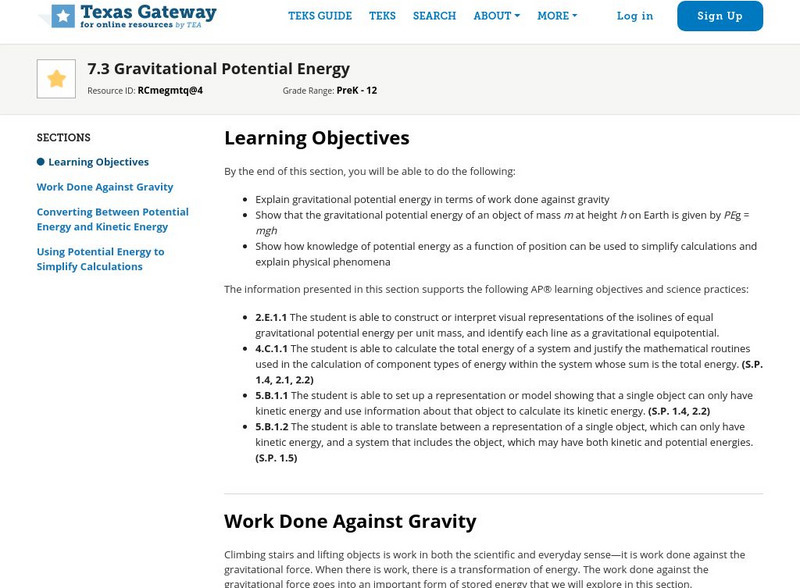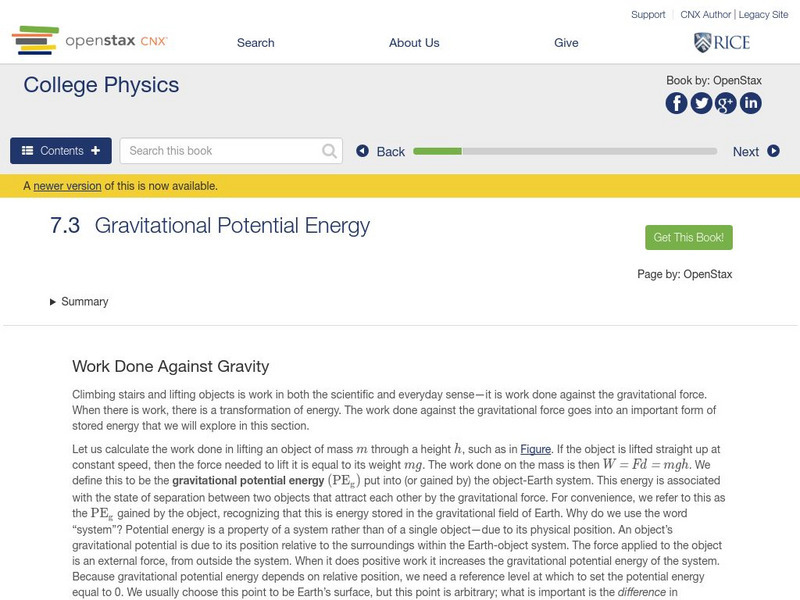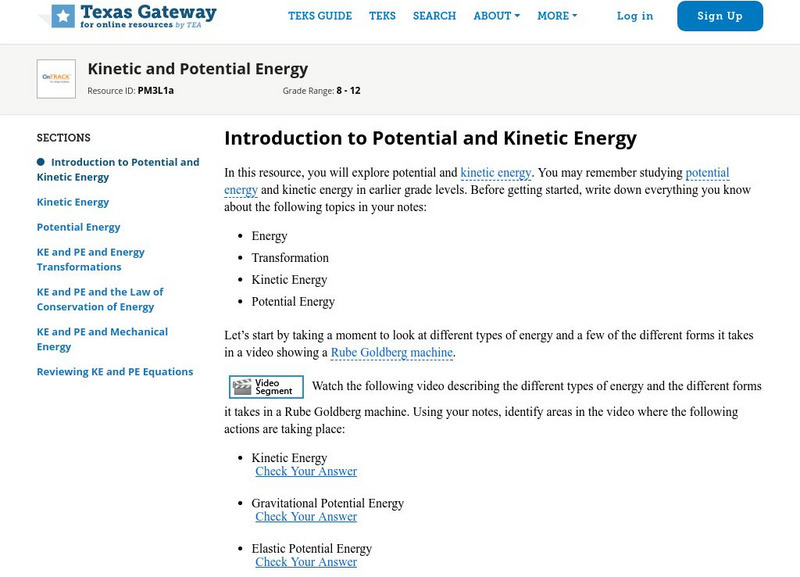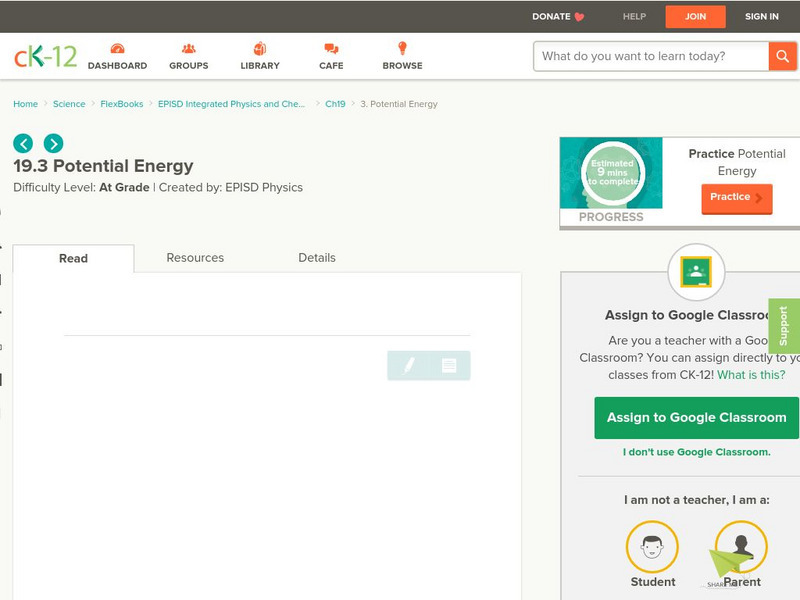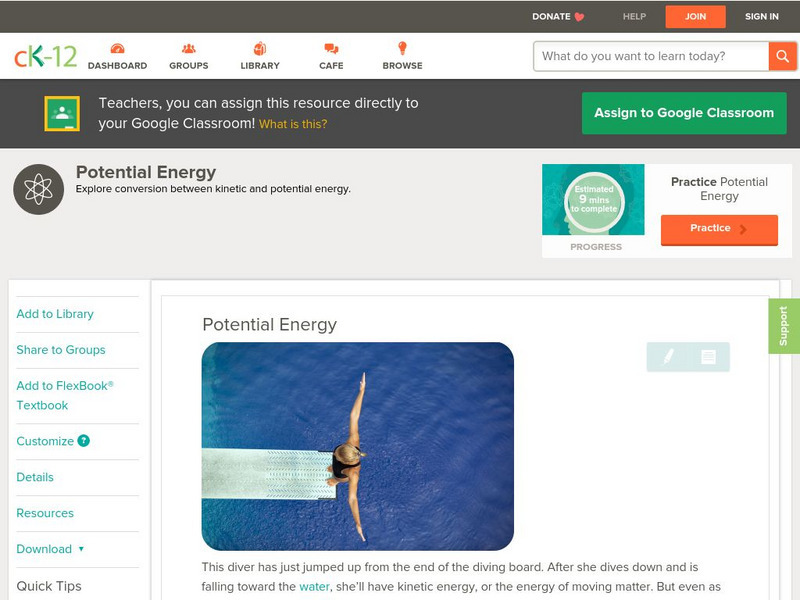Curated OER
Downhill Discoveries
Students are involved in hands-on activities to determine how course conditions affect bobsled, luge, and downhill ski races.
Curated OER
Alternative Energy
Students identify the five major alternative energy sources. For this physical science lesson, students assess the advantages and disadvantages for each type of energy. They complete a concept map using information they researched.
Curated OER
Charles’s Law
Students describe the relationship between temperature and volume. In this chemistry lesson, students perform an experiment and record their their results. They use Charles' law to explain their observations.
Curated OER
A Mysterious Roll-Back Can
Students explore Newton and his Second Law by observing a demonstration involving a can that rolls away, then rolls back to where it started. They construct their own Come Back Can and describe how the cans work.
Curated OER
Kepler's Second Law
Young scholars explore orbital velocities and how they vary along each orbit, according to Kepler's Second Law.
Curated OER
Wind Turbines
Learners build their own wind turbine. In this physics lesson, students calculate the power output of their wind turbines. They evaluate their design and make the necessary modifications.
Curated OER
Angles: Angles, Angles, Everywhere
Middle schoolers estimate and accurately measure the size of angles communicate with the appropriate geometric terms and symbols to describe and name angles, lines, line segments, rays
Curated OER
Simple Harmonic Motion
Students explain the theory of simple harmonic motion (SHM) by performing hands-on, practical application experiments.
Curated OER
Simple Harmonic Motion
Learners study harmonic motion and its oscillation. In this simple harmonic motion instructional activity students demonstrate a series of regular oscillations and explain the theory behind the experiment.
Curated OER
Electricity Review
For this electricity worksheet, students review topics related to electricity such as circuits, voltage, electric fields, and resistors. This worksheet has 21 problems to solve.
Alabama Learning Exchange
Action at Plate Boundaries
Young scholars diagram the spreading of the ocean floor. In this earth science lesson plan, students read an article on plate boundaries of the ocean. Young scholars are expected to diagram the oceanic convergent...
Texas Education Agency
Texas Gateway: Ap Physics: Conservative Forces and Potential Energy
By the end of this section, you will be able to define conservative force, potential energy, and mechanical energy; explain the potential energy of a spring in terms of its compression when Hooke's law applies; and use the work-energy...
Texas Education Agency
Texas Gateway: Ap Physics: Gravitational Potential Energy
By the end of this section, you will be able to explain gravitational potential energy in terms of work done against gravity, show that the gravitational potential energy of an object of mass m at height h on Earth is given by PEg = mgh,...
OpenStax
Open Stax: Potential Energy and Conservative Forces
In the following interactive students will define conservative force, potential energy, and mechanical energy. They will explain the potential energy of a spring in terms of its compression when Hooke's Law applies. Students will also...
OpenStax
Open Stax: Gravitational Potential Energy
In the following tutorial, students learn about gravitational potential energy in terms of work done against gravity. They will be able to show how knowledge of the potential energy as a function of position can be used to simplify...
Texas Education Agency
Texas Gateway: Kinetic and Potential Energy
Given diagrams, illustrations or relevant data, students will identify examples of kinetic and potential energy and their transformations.
Science Buddies
Science Buddies: Paper Roller Coasters: Kinetic and Potential Energy
In this lesson, your students will learn about kinetic and potential energy as they build their own roller coasters from simple classroom materials.
Georgia State University
Georgia State University: Hyper Physics: Potential Energy
This site from Georgia State University Physics Department defines and explains the concept of potential energy. Using equations and graphics to illustrate the idea, it discusses the many types of potential energy (gravitational,...
Georgia State University
Georgia State University: Hyper Physics: Elastic Potential Energy
This site from Georgia State University Physics Department defines elastic potential energy and explains its origin. Provides an equation for computing elastic potential energy and an opportunity to practice solving problems with an...
Georgia State University
Georgia State University: Hyper Physics: Gravitational Potential Energy
This site defines and explains the concept of gravitational potential energy. Uses many equations and graphics to illustrate the idea. Provides an online computational practice set with immediate feedback.
CK-12 Foundation
Ck 12: Potential Energy
[Free Registration/Login may be required to access all resource tools.] In this online tutorial, students are invited to investigate examples of potential energy and their transformations.
CK-12 Foundation
Ck 12: Potential Energy
[Free Registration/Login may be required to access all resource tools.] Students explore the differences between kinetic and potential energy, and understand how they are dependent on each other.
Science Struck
Science Struck: Potential Energy Formula
Explains what is meant by potential energy and demonstrates how to use the formulas for gravitational potential energy, elastic potential energy, and electric potential energy. Includes interactive calculators for the first two formula...
CK-12 Foundation
Ck 12: Physical Science: Potential Energy
[Free Registration/Login may be required to access all resource tools.] Definition of potential energy, gravitational potential energy, elastic potential energy and other forms of potential energy.
Other popular searches
- Kinetic and Potential Energy
- Potential Energy Diagram
- Gravitational Potential Energy
- Kinetic Potential Energy
- Elastic Potential Energy
- Calculating Potential Energy
- Physics Potential Energy
- Potential Energy Pendulum
- Kinetic vs. Potential Energy
- Forms of Potential Energy
- Potential Energy and Water
- Kinetic vs Potential Energy












